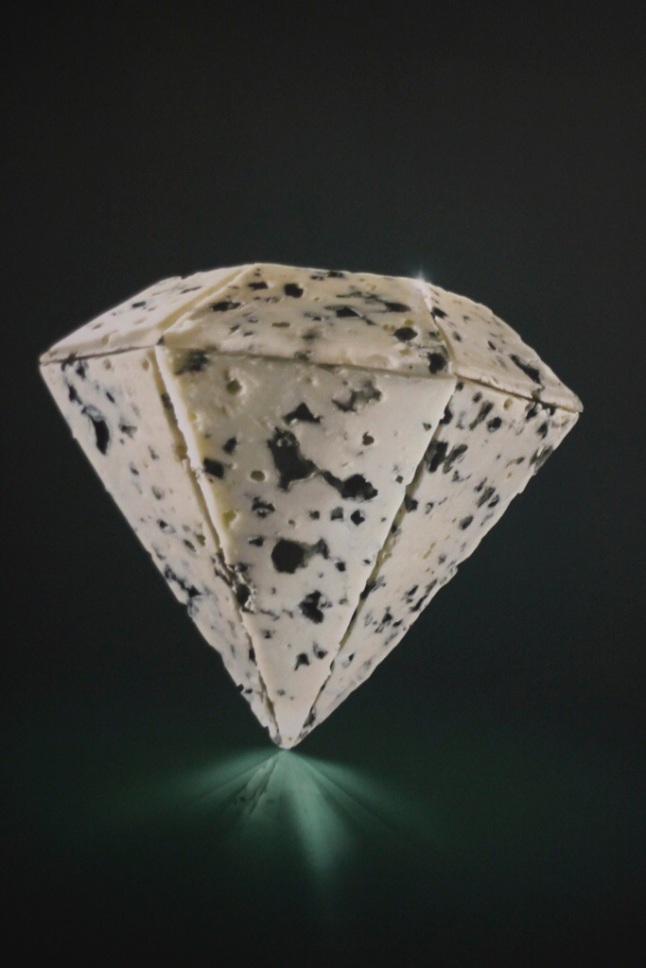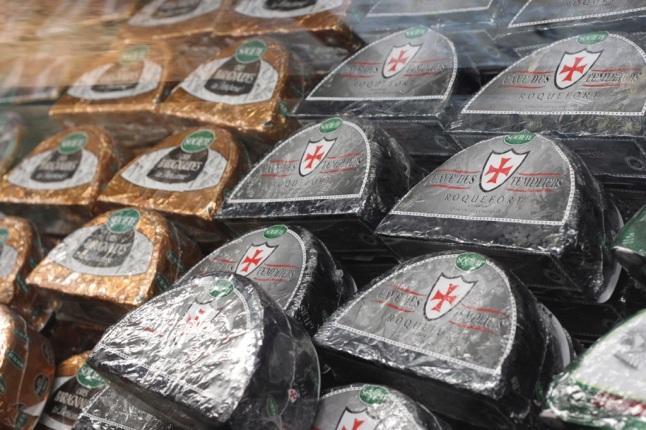Welcome to my inevitable first (probably not last) post about cheese. Today’s post: blue cheese. Specifically, Roquefort.
I used to say I didn’t like blue cheese, and I also used to say I didn’t like sheep cheese. Then, at a certain point during my travels in France I decided I liked Roquefort which is both blue and sheep. So those rules went out the window.
As with many foods of France, there is an emphasis on “where” as much as “what” – Roquefort is only Roquefort if it’s produced in natural caves in the town of Roquefort. Which I can tell you is a blink-and-you-miss-it sort of place in rolling hills and mountains in southwest France.

Behold, Roquefort: where a couple bus loads of tourists probably outnumber the actual population of the town.
The legend goes (according to online sources such as Wikipedia) that a young man was eating his lunch of cheese and bread in a cave when he spotted a beautiful woman, and as any self-respecting young romantic of France would do, he abandoned his lunch in pursuit of her. He returned a few months later, saw that the cheese was moldy, and presumably somehow decided this was an improvement upon the original. The story I got in France, unless I got hopelessly and obliviously lost in translation, was sort of the reverse – a romantic young Frenchman took a beautiful woman into the cave for a picnic and eventually the cheese was forgotten. They returned together months later with the same moldy-but-delicious result.
Like most cheese, blue cheese is high in saturated fat, and high in sodium, but also a good source of calcium and phosphate. It gets it’s distinctive tangy flavour from free fatty acids and methyl ketones, produced by the mold digesting the triglycerides in the cheese.
That mold is the part that creeps lots of people out, so let’s talk about it. It is a specific species known as penicillium roqueforti. It’s from the same genus as the mold responsible for penicillin, which radically changed humans ability to fight and treat bacterial infection. I could wax philosophical about how the Scottish man, Alexander Fleming, used the mold to create medicines whereas the romantic French used it to enhance their food. It seems fitting. But the more important question is, does that mold affect my food? In any measurably negative way, no, but the short answer might actually be “maybe.” There are a few compounds of interest, including andrastins, which are uniquely found in either the cheese or in the lab. They are of interest because they might have anticancer properties; for instance, some studies have shown their ability to inhibit the release of cancer drugs from cancer cells, thus enhancing the effect of the cancer drugs. In fact, the penicillium genus is being studied for many possible anti tumor and anticancer effects.
For now this research is at the cellular level in petri dishes so it’s hard to say what actually would happen in something as complicated as a human. Nonetheless, some interesting food for thought, regarding a food that makes many North Americans squeamish.



I am fond of cheese !
Me too! I am convinced my bone health is assured due to the copious amounts I ate as a child…